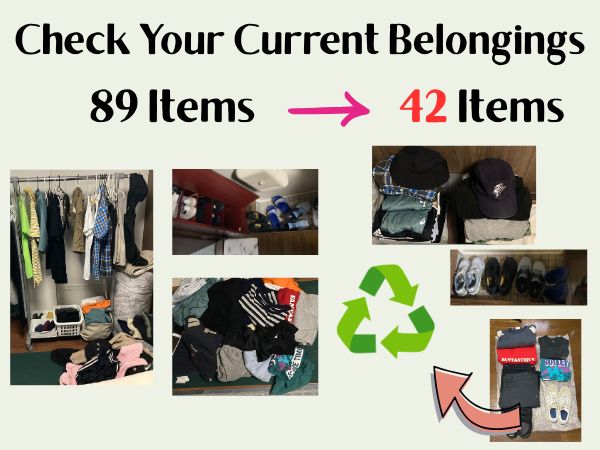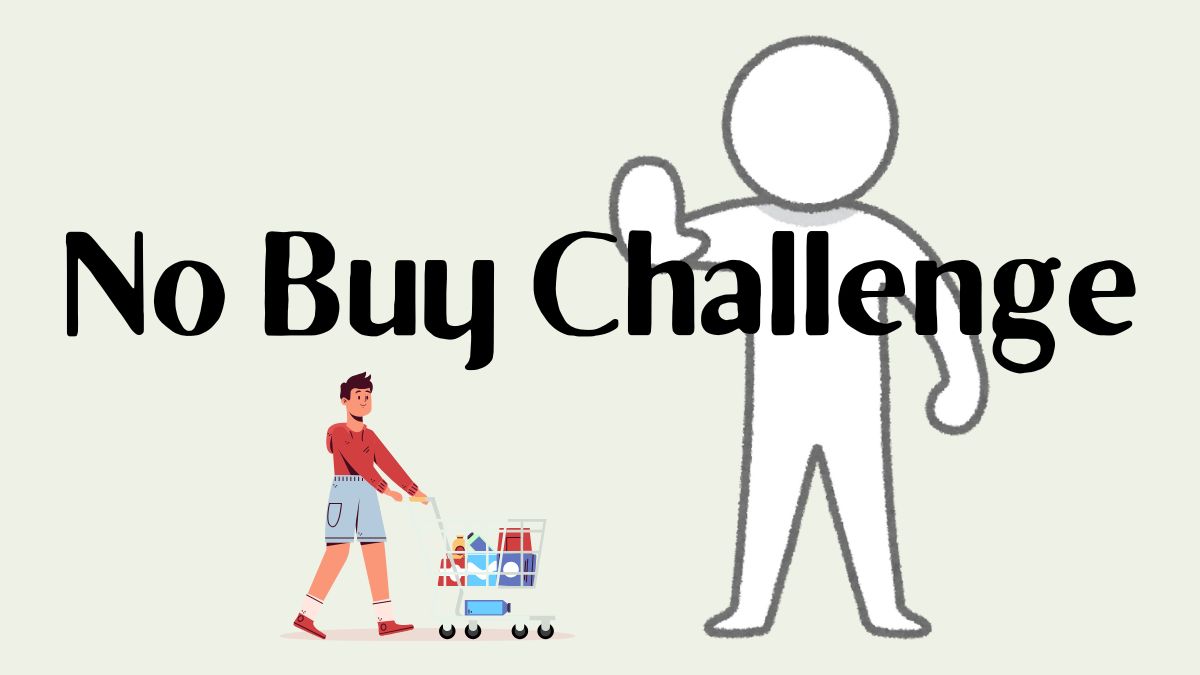🚫 The No-Buying Challenge
I decided to start a No-Buying Challenge.
The rule is simple: buy nothing except food, transportation, and work-related essentials. That’s it.
💡 Why I Started This Challenge
There are several reasons behind it:
- 🎓 I want to save money for grad school (sport psychology).
- 🏠 My apartment is tiny—too much stuff = instant stress.
- 💰 My salary isn’t that high, so every yen counts.
- 🧠 I want to understand motivation better, not just in theory but in real life.
- 💪 I want to be creative and strong without relying on spending money.
🧹 Preparing Before the No-Buying Challenge
Before starting my No-Buying Challenge 🚫🛍️, I cleaned up my room.
The reason? So that everything I need is easy to find and use when I need it 📦✨.
I had 89 clothing items 👕👖 in total. I threw away things I didn’t need ❌ and recycled items that were still usable ♻️, bringing the total down to 42 items.

Now, I’m ready for the challenge ✅.
💡 Tip: After cleaning, you’ll know exactly what you really need. This way, you can buy necessary items all at once before starting your No-Buying Challenge and avoid unnecessary purchases.
🔑 Why Motivation Matters

Ever failed to keep up with your goals?
- New Year’s resolutions ❌
- Morning routines ❌
- Fitness plans ❌
Me too. Many times.
It’s easy to set goals, but sticking to them is the real challenge. That’s where motivation comes in. Research shows that whether we succeed or fail often depends on the type of motivation we use.
If I rely only on sheer willpower, I’ll probably fail again. That’s why I’m applying psychology—using both extrinsic and intrinsic motivation.
🎁 Extrinsic Motivation
Extrinsic = doing something for a reward or to avoid punishment.
Common examples:
- 💰 Money, prizes, or bonuses
- 🏅 Awards, certificates, or recognition
- 👀 Social approval, praise, or peer pressure
- ⏰ Avoiding punishment or negative consequences
- 📈 Career advancement or promotion
Studies show that financial penalties or social pressure can boost self-control.
👉 My trick: If I break the rule and buy something unnecessary, I’ll donate $100 to charity. Painful enough to keep me in check!

But where should I donate if I fail…?
🔥 Intrinsic Motivation
Intrinsic = doing something because it personally matters to you.
Common examples:
🤝 Connection (volunteering because it feels meaningful, helping others)
💖 Personal growth (learning a new skill for yourself)
🏆 Mastery (improving performance or competence)
🎨 Creativity (enjoying the process of making something)
🧘♂️ Fun/enjoyment (playing sports, hobbies, or games just because it feels good)
👉 My trick: I remind myself why I’m saving money (Grad School). I even wrote these reasons on paper and stuck it to my wall.
Studies show that people stick to habits longer when they connect actions to personal values or identity.
🧪 My Experiment Setup
So here’s the combo I’m testing:
- Extrinsic → Peer pressure & penalty (donation rule).
- Intrinsic → Daily reminders of why this challenge matters to me.
📓 What Happened / Observations/
| Date | Events |
|---|---|
| 2025/8/15 | Started Challenge 🚀 |
| 8/19 | Found cool pants at Familymart but I didn’t buy. It was 50% off tha’s why I wanted to get it more. |
| 8/24 | My underwear gets wet because I’m still hot after a shower. I want cool underwear for the summer. |
The Science of Motivation for Athletes and Everyday Life
🧠 Self-Determination Theory (SDT)
| 📌 Category | 📝 Details |
|---|---|
| 👤 Who proposed | Edward Deci & Richard Ryan (1985) |
| 📖 What is the theory about | Explains how intrinsic (💖 internal) and extrinsic (🎁 external) motivation drive behavior. Focuses on autonomy 🕊️, competence 🏆, relatedness 🤝. |
| 🔑 Key findings | Motivation is stronger when these needs are satisfied. Intrinsic motivation = longer-lasting habits. |
| ⚽ Example for athlete | A soccer player trains extra hours not just for praise, but because they love improving skills. |
| ⭐ When it’s effective | Works best when athletes’ actions satisfy autonomy 🕊️, competence 🏆, and relatedness 🤝. Intrinsic motivation lasts longer and improves persistence. |
👥 Peer Pressure (Social Influence)
| 📌 Category | 📝 Details |
|---|---|
| 👤 Who proposed | Studied in social psychology (Asch, Cialdini, and others) |
| 📖 What is the theory about | Behavior changes under group expectations 👥, norms 📏, or judgments 👀. Can be positive ✅ (support/accountability) or negative ❌ (stress). |
| 🔑 Key findings | People adjust behavior to fit group norms, avoid punishment, or gain approval 👍. Accountability = stronger self-control. |
| 🏃 Example for athlete | A runner sticks to training because teammates are watching 👀, or joins extra practice since everyone else does it. |
| ⭐ When it’s effective | ⭐Works best when positive accountability ✅ is present and social pressure is supportive, not excessive. Helps push effort 💪 without harming mental health 😓. |



